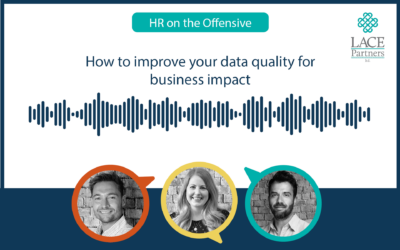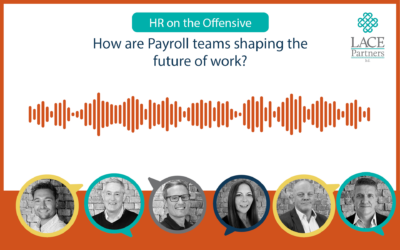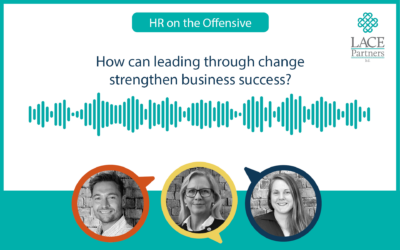Suki Sandhu recently spoke to LACE Partners’ Co-Founder Aaron Alburey and the HR Guild’s Annette Andrews about the importance of ensuring businesses bring diversity into the entire employee life cycle, not just the hiring process. Catch up on the In the Spotlight podcast series by the Guild of HR Professionals.
“We want to hire a female CEO”
For a long time now when I have spoken to senior executives at businesses I work with, I have heard this as a mantra, or “We want to hire a female board member”. That has evolved into the question about race, social mobility, sexual orientation and how you identify yourself. I run both an Executive Search business and also a consulting business on diversity and inclusion. What I have found in my time in recruitment is that whilst the desire is there to hire diverse talent, if that person feels as though the culture and organisation is moving in the right direction, then they will quickly move on.
The support mechanisms that an individual receives when it comes to diversity are crucial in ensuring that people feel like they are not on their own. Often these mechanisms are overlooked and whether you are a business that is diverse or not, the onboarding process is essential; especially if you are establishing ‘firsts’. Any business hiring its first female on to the board or its first ethnic minority on to an Exec team must ensure that the appointment is not just a ‘box ticking’ exercise and that the individual will be heard and add value. The first 100 days – in my experience – is crucial and that has to start from the moment a contract is signed. There is a war for diverse talent at the moment and that means that if you cannot build that trust, empathy and feeling of inclusivity from your diverse talent, you will not succeed in embedding a diverse culture into your business.
Positives from COVID for the diversity agenda?
There has certainly been a rebalancing from what I have seen. If you think about the practicalities of so many people remote working, suddenly you have access to a wider pool of talent; think about how much easier it is for disabled talent to be part of the process now, as an example.
There is also an element of everyone being in different locations, on a call, even if there are multiple people on the call, that is quite egalitarian and enables people applying for roles and interviewing to feel more at ease and able to bring their ‘full selves’ to an interview.
One of the challenges, however, has been that onboarding process. Whilst the hiring process may have been quicker as a result of the pandemic, the onboarding process that you would get if you were physically in the office and meeting your new peers, direct reports, etc, isn’t there and so ensuring that you provide the feeling of inclusivity and diversity in a business is all the more of a challenge that businesses need to overcome.
Be creative in attracting diverse talent
In a virtual world that we have been living in you have to be able to stand out when attracting diverse talent. One client we worked with recently recorded a short film to try to ‘sell’ the role to prospective candidates and the wider public. There was then a virtual ‘open evening’ in which those candidates who had applied could all confidentially log in and hear from him and take questions from him. That is a great example of a business trying to open, transparent and build trust amongst prospective employees and the feedback we got was fantastic for the process.
Momentum in diversity and inclusion must remain beyond 2020
The Black Lives Matter movement has been an important catalyst for everyone to start talking more about how we drive better diversity in our society in aspects of our lives like work. In the midst of the movement, we published an open letter in the Sunday Times, getting CEOs from large businesses to sign this and acknowledge that something needed to be done. We recognised that this cannot be a point in time in which is just consigned to history. We didn’t want the protests to subside and then the enthusiasm in this movement to fade away.
The letter was about annual reporting on what businesses are doing on race and diversity, setting targets at all levels on what businesses are doing, to ensure a diverse pipeline of candidates that are coming through so that businesses can have that larger pool of talent with which to choose from.
The purpose of it was also to be able to give companies a platform with which to take action. There has been lots of talk about companies running focus groups, or canvassing their business, but my challenge is always what action is being taken as a result of this activity ? It is only through action that we can really make a positive difference in striving to deliver a more diverse workforce.
HR’s role in driving the diversity debate
HR plays an integral role in driving culture, values and behaviours. But HR is not immune to the issue of race, particularly in its own discipline. HR needs to be thinking itself how it is promoting, developing and recruiting the widest pool of talent for its own community and its own function. The HR leaders of today need to be assessing why diversity hasn’t been able to rise through its ranks and what data they have at their disposal to drive change.
A frustration I have with businesses is that the diversity discussion cannot just sit with HR. You cannot just delegate the diversity and inclusion agenda to HR and expect all problems to be solved by one team or function alone. The whole business has to ‘own it’, with HR as the driving force selling the business case for diversity and inclusion, through evidencing decisions and having the data to back it up.






